A robotic submersible vehicle deployed from a Canadian ship discovered a piece of debris from the submarine Titan on Thursday morning local time on the seabed about 488 meters (1,500 feet) off the bow of the Titanic and nearly 4 kilometers (2.5 miles) deep in the North Atlantic, US Coast Guard Rear Admiral John Mauger told reporters.
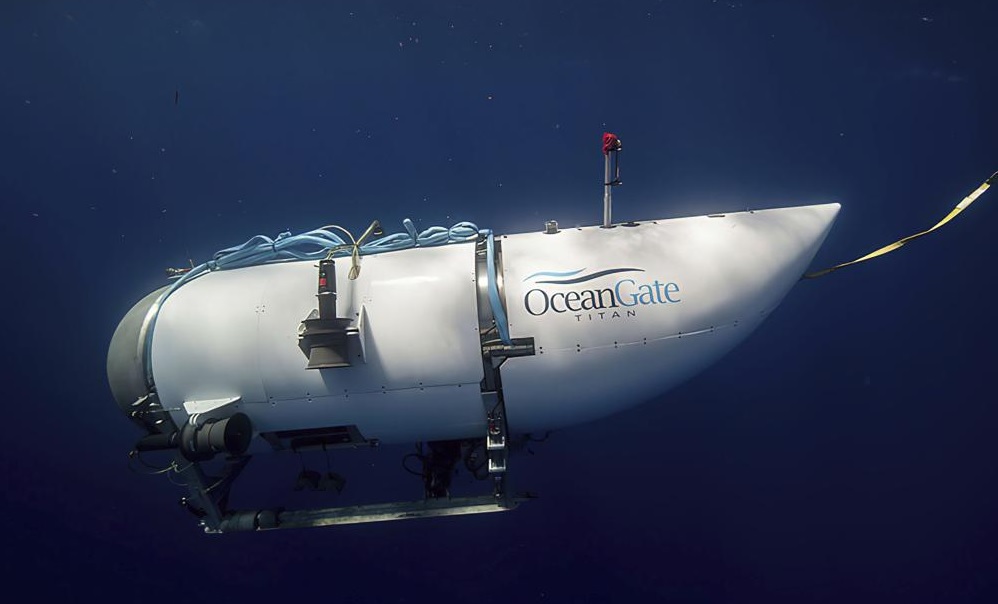
The submarine Titan and its five explorers suffered the same fate as the Titanic it was exploring. Photo: AP
There is no miracle
As previously known, the tourist submarine operated by the US-based company OceanGate Expeditions lost contact with its mother ship on the surface on Sunday morning, about 1 hour and 45 minutes after setting off on an expedition to the world's most famous shipwreck, the Titanic.
Coast Guard officials said five major pieces of the 22-foot Titan were found in the area, including the stern and two hull sections. There was no word on whether any remains had been recovered. “The debris is consistent with a catastrophic explosion of the vessel,” Mauger said.
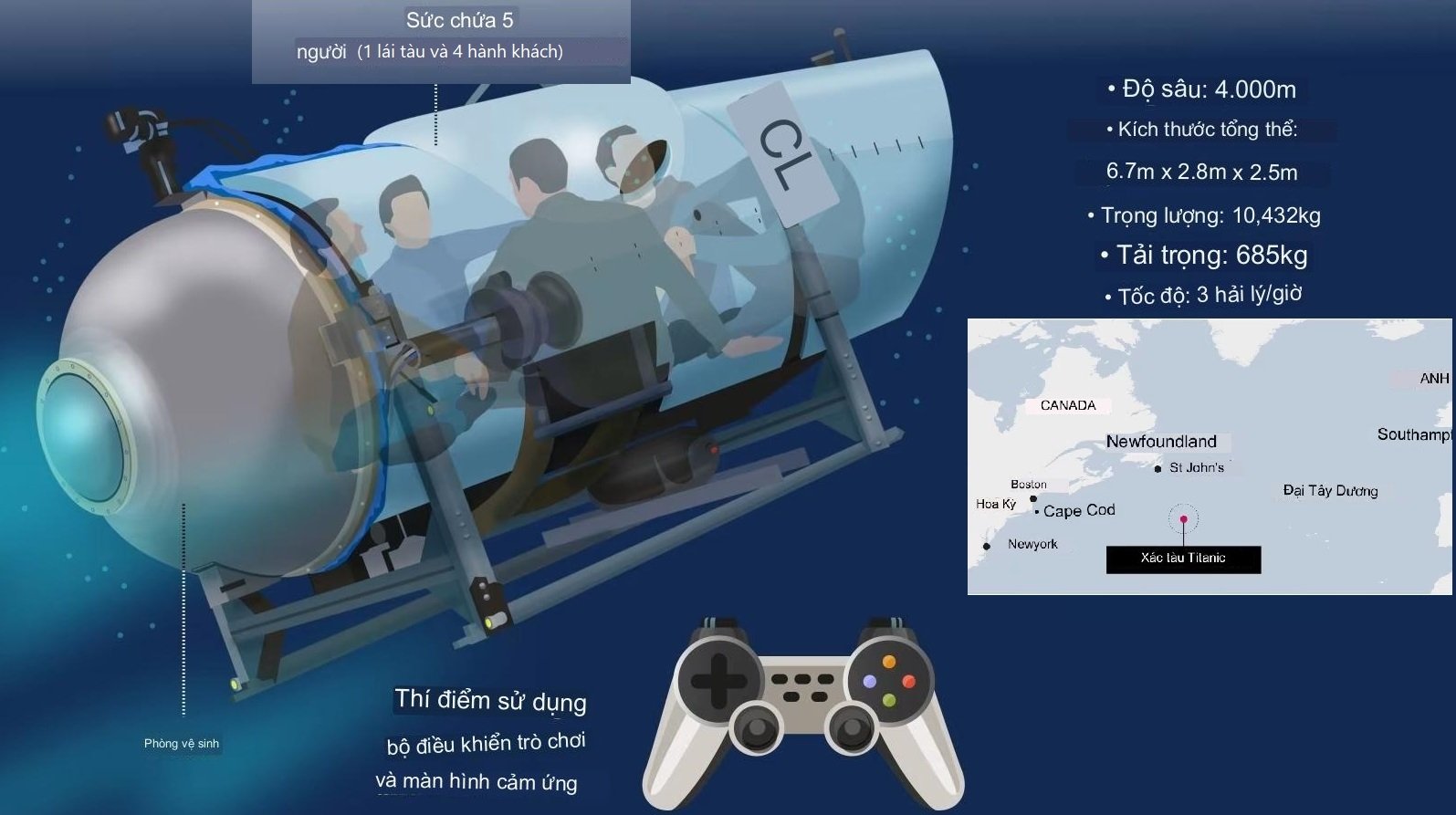
Illustration of the Titan submarine. Graphic photo: CNA
Even before the Coast Guard press conference, OceanGate issued a statement saying there were no survivors among the five people aboard the Titan, including OceanGate founder and CEO Stockton Rush — who was tasked with piloting the Titan.
Three of the four remaining were British billionaire and explorer Hamish Harding, 58; Pakistani businessman Shahzada Dawood, 48, and his 19-year-old son, Suleman. The final victim was French oceanographer and renowned Titanic expert Paul-Henri Nargeolet, 77, who had visited the wreck dozens of times before.
“These men were true explorers who shared a distinct spirit of adventure and a deep passion for exploring and protecting the world’s oceans,” OceanGate said. “Our hearts go out to them and every member of their family during this tragic time.”
During the recent search, rescue teams from several countries spent days scouring thousands of square kilometers of ocean using planes and ships to search for any sign of Titan.
What happened to Titan?
Rear Admiral Mauger said it was too early to know when or why Titan would suffer the same tragic fate as the historic Titanic it was exploring. He said the search had not detected any loud, violent noises that would have been emitted by a submersible explosion.
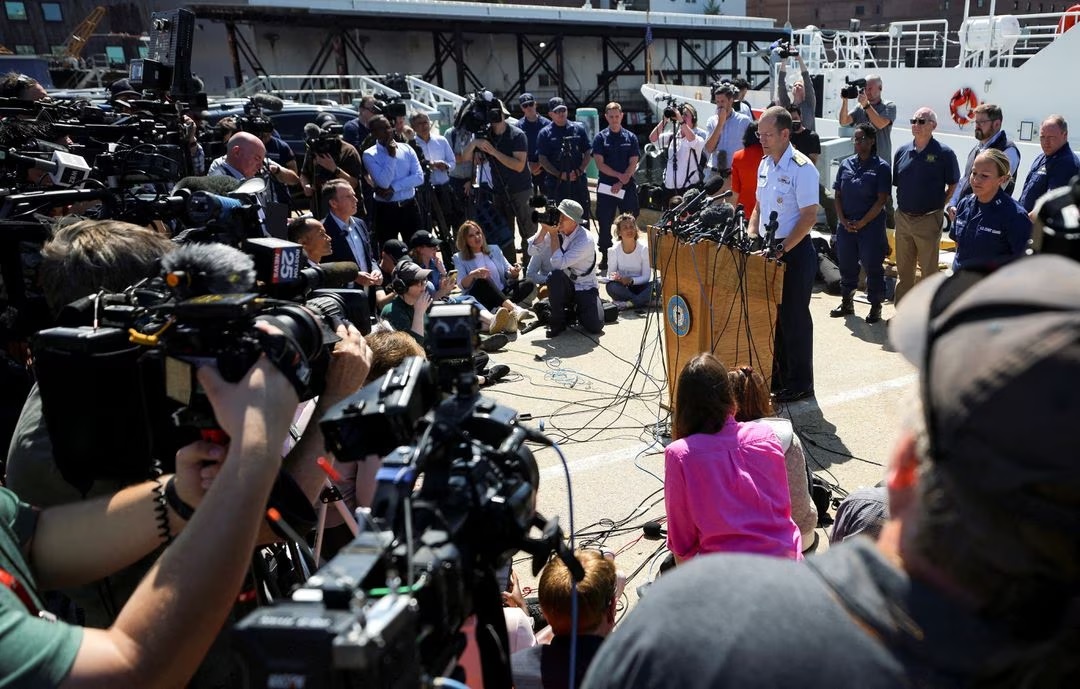
Rear Admiral John Mauger announces the fate of the missing submarine to a crowd of reporters from around the world in Boston, Massachusetts on June 22, 2023. Photo: Reuters
But the location of the debris relatively close to the shipwreck and the time frame of the last communication with Titan appear to indicate the incident occurred near the end of its journey on Sunday.
Sonar buoys had previously picked up some sounds on Tuesday and Wednesday, which had raised hopes that Titan was still intact and that the explorers on board were still alive and trying to communicate by banging on the hull.
But officials said analysis of the sound showed it was unclear and the noise could have come from something else. “There does not appear to be any connection between the noise and the location of the debris on the seabed,” Mauger said Thursday.
Mauger said the underwater robot will continue to collect evidence, but it is unclear whether the victims' bodies will be recovered due to the nature of the accident and the harsh conditions thousands of kilometers below the seabed.
The search turned desperate late Thursday, when the submersible's estimated 96-hour air supply was expected to run out if Titan remained intact.
More than a century ago, the Titanic hit an iceberg and sank on its maiden voyage in 1912, killing more than 1,500 people on board. The historic sinking has inspired explorers, historians and artists ever since, including James Cameron's 1997 blockbuster film Titanic.
Huy Hoang (according to Reuters, CNN, AP)
Source













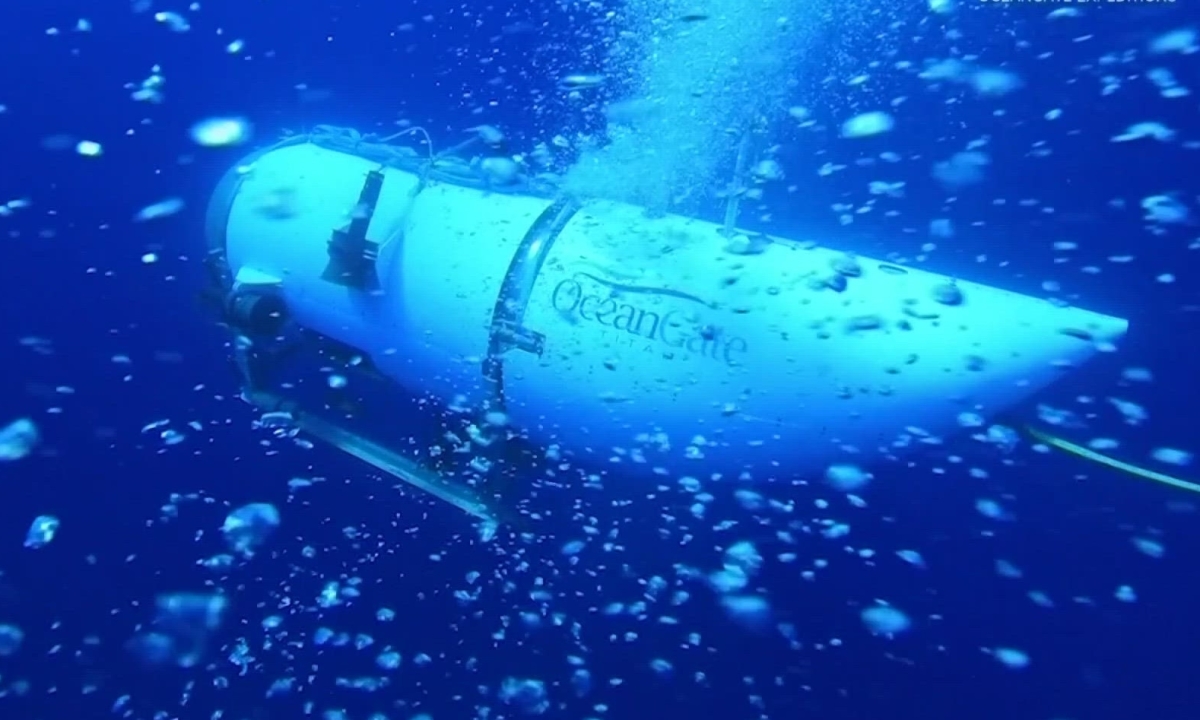

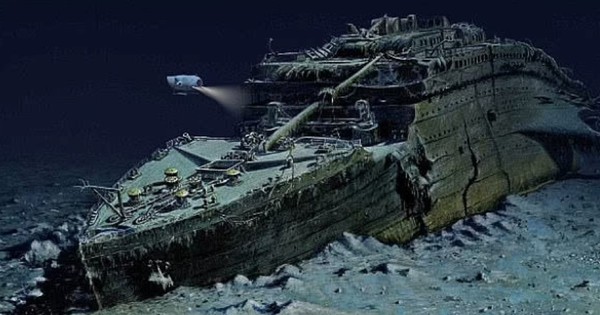

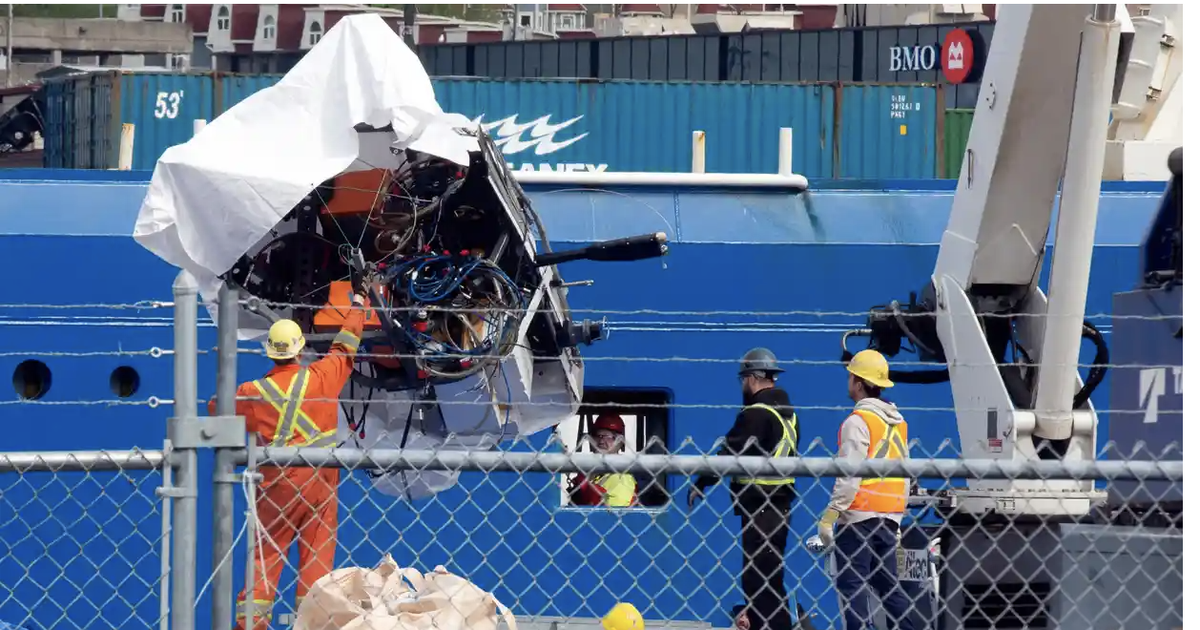

























![[Photo] Prime Minister Pham Minh Chinh chairs Government Conference with localities on economic growth](https://vstatic.vietnam.vn/vietnam/resource/IMAGE/2025/2/21/f34583484f2643a2a2b72168a0d64baa)























































Comment (0)